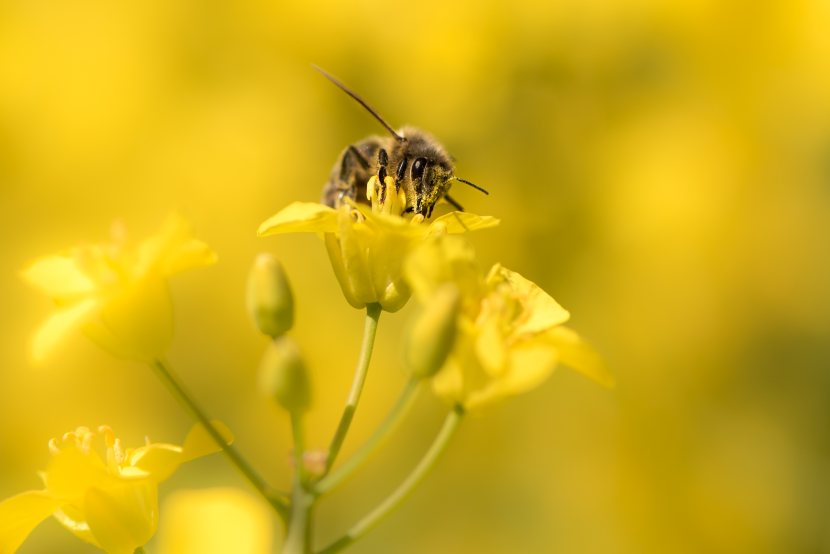
A project looking to bring benefits to both bees and farmers has begun in Cornwall after a successful six month pilot phase.
‘Farms for AONBees’ is a partnership project which has worked with 5 farms and land owners across the different faces of Cornish farmland.
At the heart of the project is a free computer programme conceived and developed within the pollinator research team at the University of Exeter’s, Environment and Sustainability Institute (ESI).
The programme determines how virtual bees survive in digital landscapes.
It is currently being applied to agricultural holdings in Cornwall’s Area of Outstanding Natural Beauty (CAONB), to provide data to farmers about where their bee colonies may be and how they could be surviving on their land.
In addition, farmers are also being provided with customised recommendations about how and where they could increase the habitat and flowers available to bees and other pollinators.
The projects aims to benefit bees and boost Cornish food production through better rates of pollination.
Landscape-scale benefits
Key findings from the first stage saw how even just small changes in management could make a difference to the number of bumblebees on not farms to achieve landscape-scale benefits.
In addition, by planting the right flowers in the right place, ESI said farmers could see increases in the rates of pollination significantly whilst providing free fertiliser for the soil and protein, vitamins and minerals for livestock.
Falmouth-based Joe Dunstan, a farmer and owner of Cousin Jack’s Ltd, was one of the pilot project participants.
He said: “The Farms for AONBees team came up, explained to us where the bee colonies were likely to be, then showed us all the different options that we could choose for ways to manage our areas that we don’t crop.
“We discovered that just by making a few small changes we can increase the pollinators around, which in turn will have a benefit to the crops that we’re growing.”
The next stage of the project will see researchers tailor the computer models for land owners, managers and advisors to support pollinator populations on farmland.
After using the ESI’s model of bumblebee colonies called BUMBLE-BEEHAVE during the pilot phase, the project will now include the other models on Honeybee behaviour and pollinator landscape exploration into a new decision-support tool called BEE-STEWARD.
'Inherently important'
Grace Twiston-Davies, ESI Research Associate and ‘Farms for AONBees’ project lead said: “We’ve learnt a lot from the pilot project and it’s been invaluable in getting feedback on the models and the service we provide for farmers and agricultural experts.
“We’ve factored that into this next phase as we put the new model to work. Ultimately we hope this cutting-edge research developed will help provide some solutions to the challenges of protecting the nations’ bees and balancing food security.
“The beauty and biodiversity of the UK countryside is inherently important to the nations’ Areas of Outstanding Natural Beauty.
“Along with the productivity and quality of the nation’s £100bn food industry, they are significantly dependent upon the abundance and sustainability of pollinating insect numbers.”
